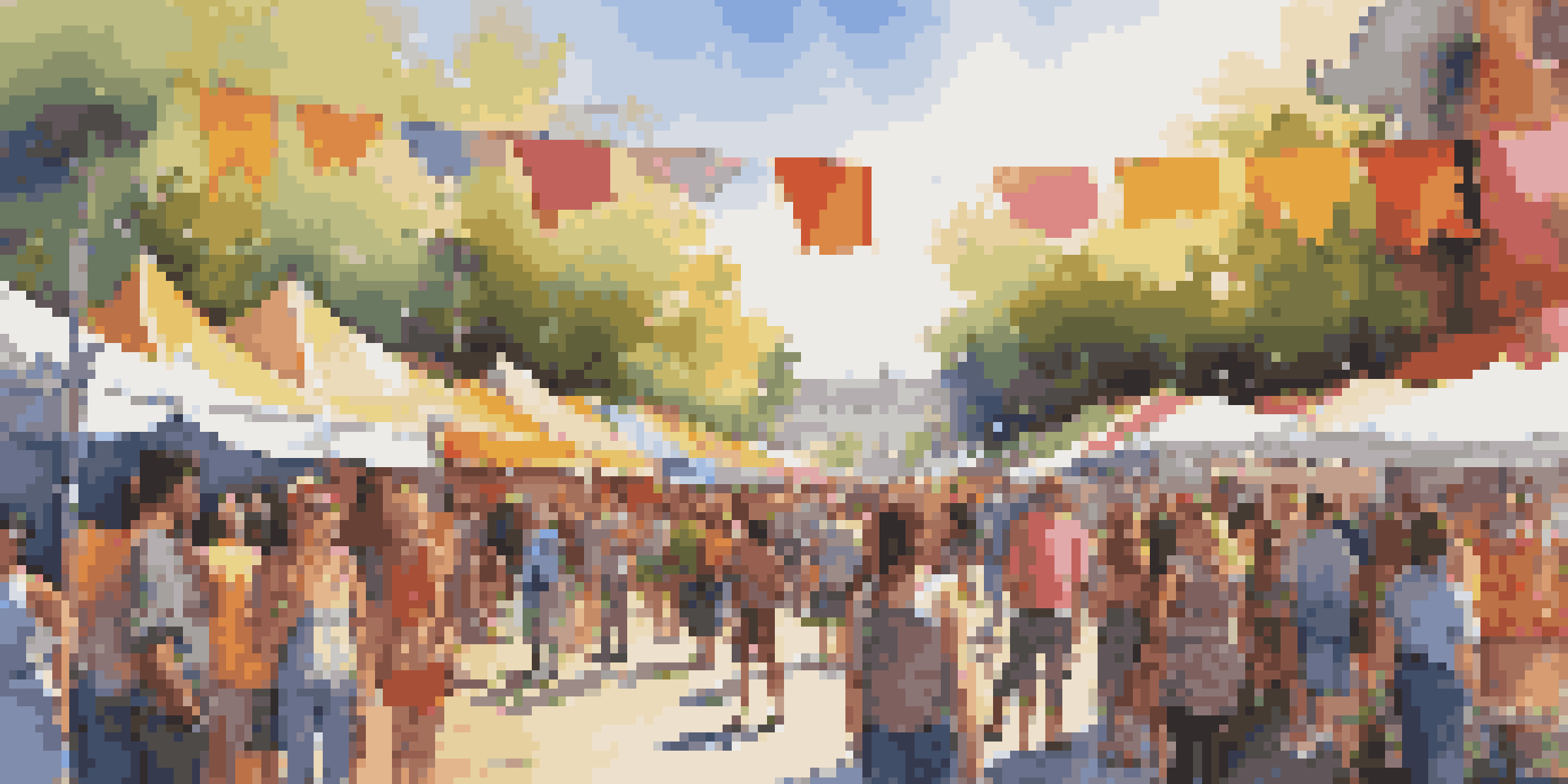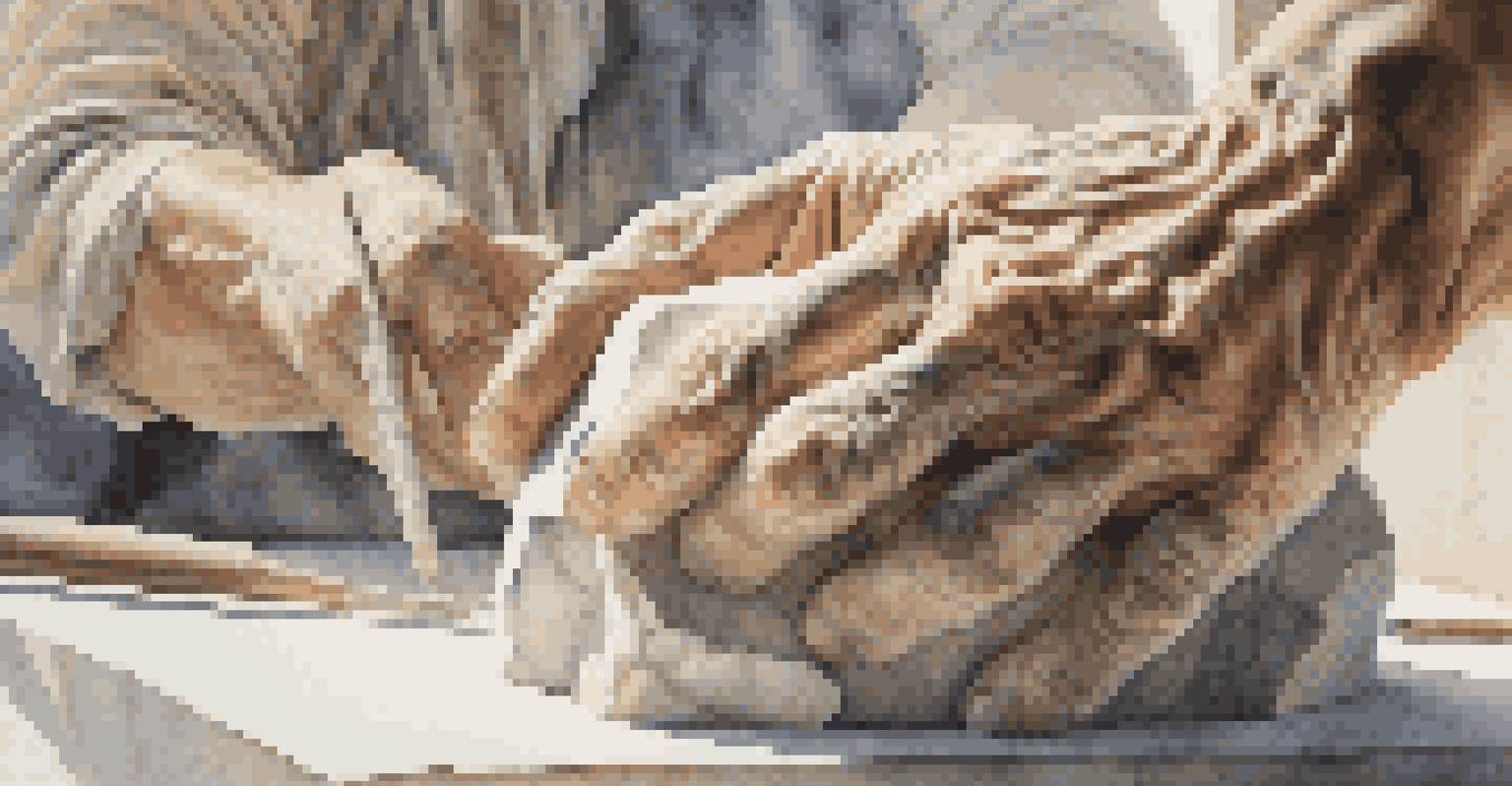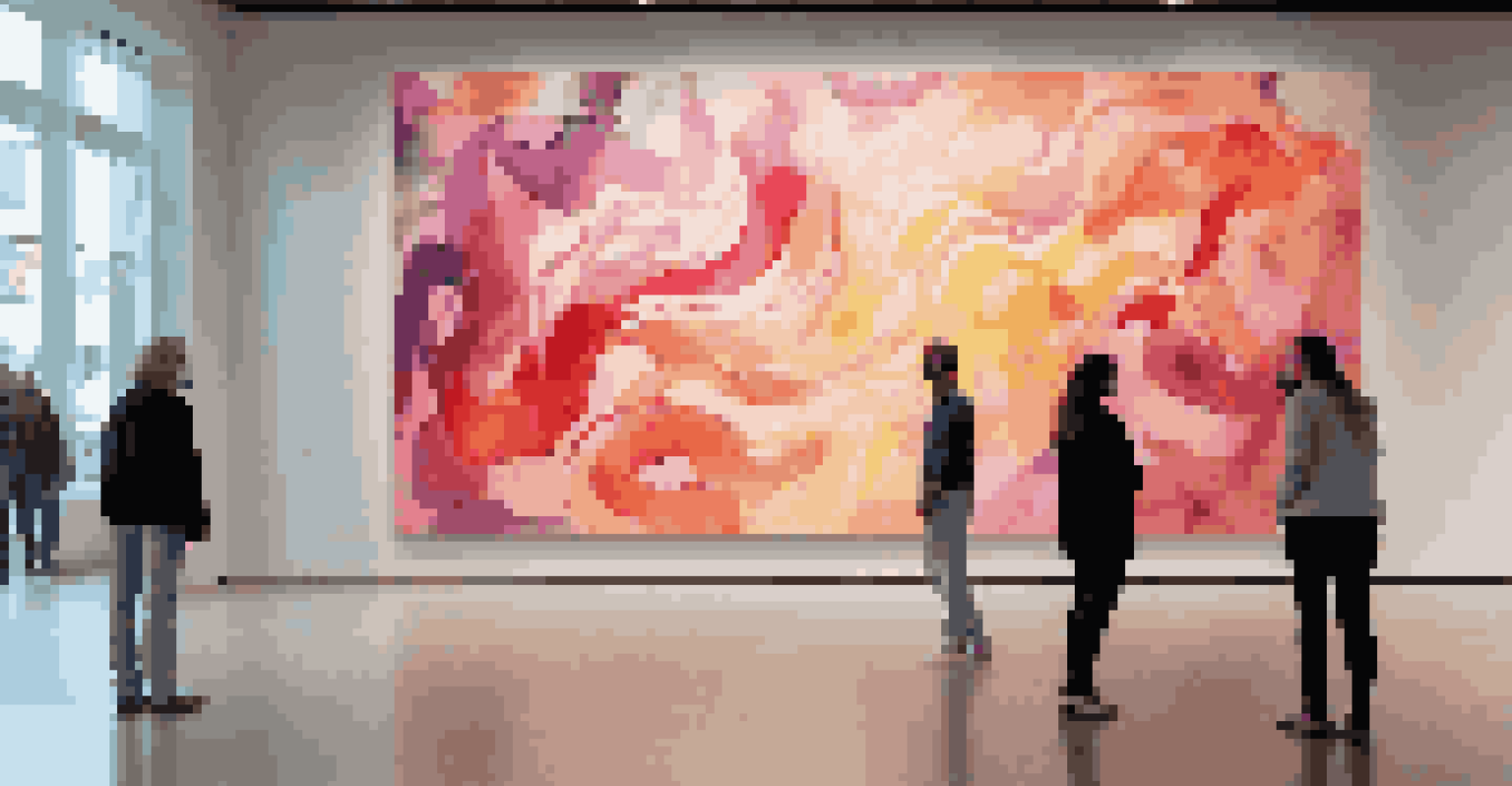Artistic Expression and Freedom: Policy Challenges and Solutions

Understanding Artistic Expression and Its Importance
Artistic expression is a fundamental aspect of human culture, allowing individuals to communicate thoughts, emotions, and ideas through various mediums. It ranges from visual arts to performance and literature, each serving as a mirror reflecting societal values and personal experiences. This form of expression not only enriches our lives but also fosters dialogue and understanding across diverse communities.
Art is not freedom from discipline, but disciplined freedom.
However, the significance of artistic freedom extends beyond personal expression; it plays a crucial role in shaping public discourse. When artists are free to create, they can challenge norms and provoke thought, encouraging audiences to question the status quo. Unfortunately, this freedom can often be at odds with political, social, or cultural constraints, leading to a complex landscape where artists must navigate their rights.
As we delve deeper into the challenges surrounding artistic expression, it becomes clear that understanding its importance is the first step towards safeguarding it. The ability to express oneself freely is not just a privilege; it's a right that should be upheld in every society, contributing to progress and innovation.
The Current Landscape of Artistic Freedom
Globally, artistic freedom is under threat from various fronts, including censorship, political repression, and social backlash. Artists often face limitations on what they can express, leading to self-censorship or the outright suppression of their work. This environment stifles creativity and can deter emerging artists from sharing their voices, ultimately impoverishing cultural landscapes.

In some regions, government policies explicitly limit artistic expression, labeling certain works as 'offensive' or 'dangerous.' These restrictions not only affect individual artists but can also lead to a broader chilling effect, where entire communities feel the pressure to conform. Such conditions can create an atmosphere of fear, hindering the vibrant exchange of ideas that is essential for cultural growth.
Artistic Expression is Vital
Artistic expression enriches culture and fosters dialogue, making it essential for societal progress.
It's essential to recognize the varied challenges artists face, as they often intersect with broader societal issues such as human rights, freedom of speech, and social justice. By acknowledging these challenges, we can begin to explore policies and solutions that promote a healthier environment for artistic expression.
Censorship: A Major Barrier to Artistic Freedom
Censorship remains one of the most significant hurdles to artistic freedom, manifesting in different forms across various cultures. This suppression can occur through government regulations, societal pressures, or even the self-imposed limitations artists place on themselves due to fear of backlash. The impact of censorship can be profound, stifling not only individual creativity but also diminishing the diversity of voices within the art community.
Censorship is the child of fear and the father of ignorance.
Take, for instance, the case of artists who have faced legal repercussions for their work. In some countries, political cartoons or provocative performances can lead to arrests, highlighting how fear of reprisal can deter artists from addressing critical social issues. This not only curtails their expression but also limits public engagement with important topics, ultimately weakening democracy.
To combat censorship, it's vital to advocate for policies that protect artistic expression, ensuring that artists can work without fear of repercussions. This includes creating safe spaces for dialogue and collaboration, where diverse perspectives can flourish and challenge prevailing narratives.
Political Repression: Artists as Targets
Political repression often targets artists due to their unique ability to influence public opinion and inspire change. Governments may view art as a threat, especially when it critiques authority or highlights social injustices. As a result, artists can become prime targets for harassment, imprisonment, or exile, drastically affecting their ability to create and share their work.
This repression not only silences individual voices but can also diminish the overall cultural richness of a society. When artists are marginalized, the narratives that emerge tend to represent only the dominant viewpoints, leading to a homogenized culture that lacks depth and diversity. The absence of varied perspectives can have long-lasting effects on societal progress and understanding.
Censorship Stifles Creativity
Censorship significantly limits artistic freedom, leading to a homogenized culture that lacks diverse voices.
Addressing political repression requires a concerted effort from both local and international communities. Support networks, advocacy groups, and cultural organizations can play a pivotal role in protecting artists, ensuring that their contributions to society are recognized and valued.
Social Backlash: The Risks of Controversial Art
In many cases, artists face social backlash for creating work that challenges societal norms or addresses sensitive topics. This backlash can manifest as public outrage, boycotts, or social media campaigns aimed at discrediting the artist. Such reactions can be disheartening, often leading artists to second-guess their creative instincts and avoid controversial subjects altogether.
However, it's essential to understand that controversy is often a catalyst for important conversations. When artists confront uncomfortable truths, they challenge audiences to reflect on their beliefs and values. By avoiding these topics, society risks stagnation, missing opportunities for growth and understanding.
To mitigate the risks associated with social backlash, artists can seek out supportive communities that celebrate diverse expressions. Building alliances with other creators, activists, and cultural organizations can provide a buffer against negativity while fostering a culture of acceptance and dialogue.
Potential Solutions: Advocacy for Artistic Freedom
Advocacy plays a crucial role in promoting artistic freedom and ensuring that artists can create without fear. Organizations dedicated to protecting artists' rights work tirelessly to raise awareness about the importance of artistic expression. These groups provide resources, legal support, and platforms for artists facing censorship or repression, empowering them to continue their work.
Additionally, public campaigns that highlight the value of artistic freedom can shift societal attitudes. By engaging communities in discussions about the importance of diverse artistic voices, we can foster a culture that embraces creativity rather than stifles it. Educational initiatives that teach the significance of artistic expression can also cultivate a new generation of advocates who appreciate and defend these rights.
Technology Empowers Artists
The digital landscape provides artists with tools to share their work globally, though it also presents challenges like censorship and access.
Ultimately, the responsibility lies with all of us to support artistic freedom. Whether through advocacy, education, or simply enjoying and sharing art, every action contributes to a more vibrant cultural landscape.
The Role of Technology in Enhancing Artistic Expression
In our increasingly digital world, technology has emerged as a powerful tool for artistic expression. Artists can now reach global audiences through online platforms, enabling them to share their work without the constraints often imposed by traditional gatekeepers. This democratization of art has opened new avenues for creativity, allowing diverse voices to emerge and flourish.
However, while technology provides opportunities, it also presents challenges. Issues of online censorship, data privacy, and the digital divide can impact artists' ability to communicate and connect with audiences. Ensuring that all artists have access to technology and the skills to use it effectively is crucial for fostering an inclusive artistic community.

As we navigate the intersection of technology and art, it's essential to advocate for policies that support digital freedom. This includes promoting net neutrality and protecting artists from unjust censorship on online platforms, ensuring that the digital space remains a viable environment for artistic expression.